When Cirque du Soleil comes to town it’s like a whole new neighbourhood rolls in. A travelling show from the 40-year-old Canadian company – the world’s largest contemporary circus – is a huge operation. And to go backstage is to get a glimpse into the heart of the beast – in this case Ovo, which arrives in Dublin next month for Cirque du Soleil’s first visit to Ireland for six years.
Ovo (from the Latin for “egg”, a theme of the show) involves 100 people, 52 of them artists, from 25 countries, not including the 23 truckers transporting sets, costumes and aerial equipment, or the caterers who feed them all. A high-energy, awe-inspiringly acrobatic take on an insect colony that borrows the characteristics of various species to create a sort of biodiversity fairy tale, it has been seen by more than seven million people in 35 countries since it first opened, in Montreal, in 2009. We’re in Lyons, in southern France, to see how the show is put together.
In the city’s vast Halle Tony Garnier, a former slaughterhouse and cattle market that is now France’s third-biggest venue, lamps up towards the metal-trussed roof create pools of light on the smooth floor. Otherwise the hall is in almost complete darkness ahead of tonight’s performance. A row of trucks are parked right inside the back door, looming out of the gloom. To the right are costumes: rails and shelves of brightly coloured, cartoonlike creatures.
In a side room with sewing machines, costumiers are working on insect shells and wings. A large travel cabinet contains threads, tools and fabrics. Ovo’s costumes, which get a lot of hard wear, are looked after by four wardrobe technicians, who refit, repad and repair them as required, as well as washing them. “They’re probably the first ones in, last ones out,” says Janie Mallet, who manages the tour’s logistics. “The repair rack is never ending.”
READ MORE
Ovo’s main character is Master Flipo, the head of its community of crawling, fluttering, playing, working insects. There’s also the strong but lonely Ladybug, who falls for Foreigner, a gawky, buzzy fly who arrives carrying an egg on his back. Mallet takes down Master Flipo’s costume and points out its elaborate wings. “Feel the weight,” she says. “He has a big belly, a full costume, so it’s quite heavy.”
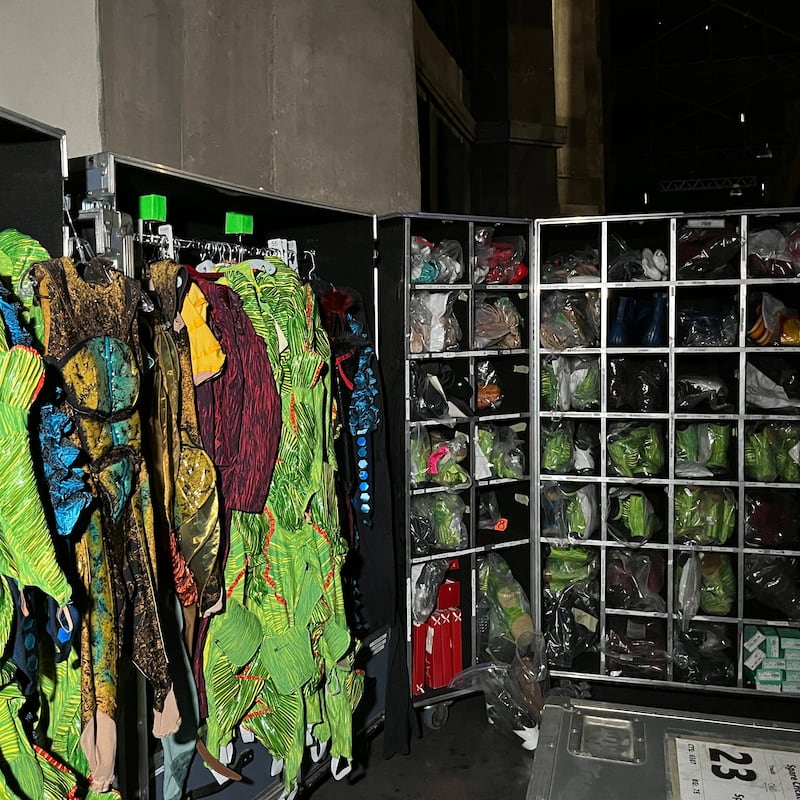
A bright-green cricket costume is lighter and leaner. “In real life, crickets jump around,” says Mallet. “The crickets are [played by] gymnasts, trampolinists, tumblers. We also have scarabs, flying from one platform to the next, and we have butterflies, which are aerial straps artists, flying above the stage.”
The costumes are created at Cirque du Soleil’s Montreal headquarters, in “probably one of the largest costume shops of its kind in the world”, with up to 300 full-time costume-makers. They start with white fabric and create pigment to dye it, before cutting and stitching. Shoes too are made from scratch; Mallet shows us an inner shoe, specific to the tumbler who wears it, secreted inside one of the cricket’s green shoes.
In the background there’s a whirr. A touring mini-laundromat in the vast, dark cavern is a surreal sight. “Yesterday, to get ready for the premiere tonight, they did 46 loads of laundry. At intermission it’s going to start again.”
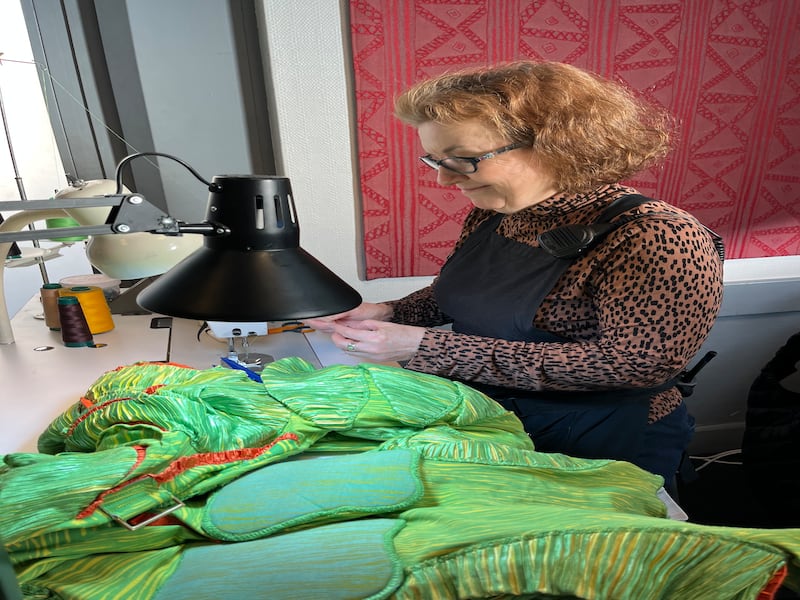
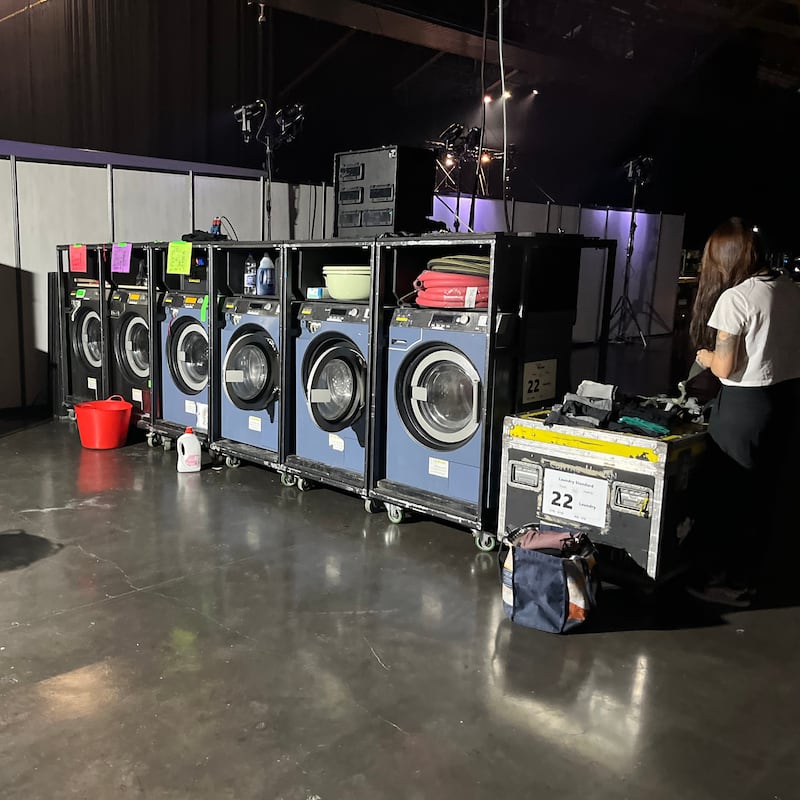
Cirque du Soleil has productions on the go around the world, from long-term residencies in cities such as Las Vegas to touring big-top and arena shows such as Ovo. Since 1984, the company says, more than 378 million people in 86 countries on six continents have seen one of its shows, and it employs more than 4,000 people, including 1,200 artists of 80 nationalities.
Ovo has toured internationally (including to Ireland, in 2018) for 14 years. At the end of 2021, after the two-year pause enforced by Covid-19, it got three new acts. “Almost a third of the show is entirely new”, says Mallet as we go deeper backstage. Technicians are checking equipment; acrobats are training. The acrobats train on days when there’s only one performance. With six to 10 shows a week, they don’t do full run-throughs but instead work on specific sections, changing transitions or adding tricks.
With a constantly touring production, new performers join regularly. Many are athletes; Ovo’s cast currently includes several national champions and two Olympians. Each new member spends three months in Montreal, training at headquarters with a coach and an artistic coach, being fitted for costumes and learning cues and choreographies before training on stage on the road and, finally, being incorporated into the show.
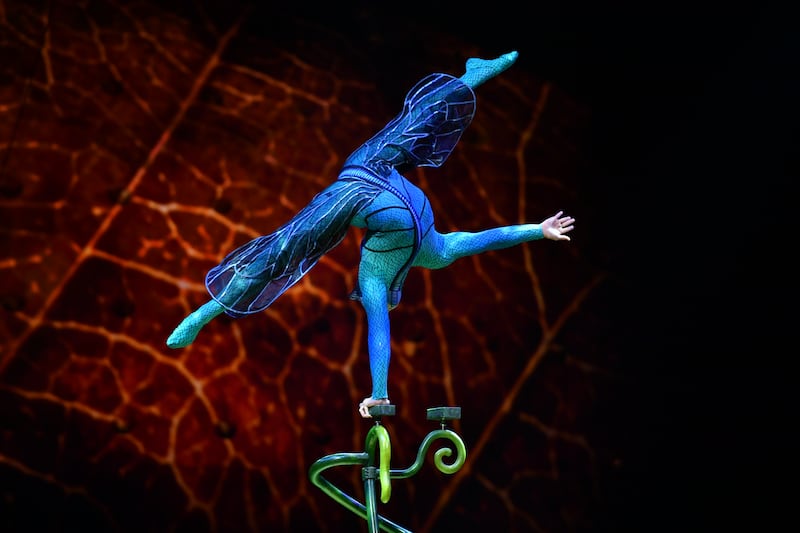
As we near the back of the huge set, which rises into the high roof space, we come to the “jungle gym”, a contraption that incorporates an aerial point, a cradle and Chinese poles. Several athletes are swinging, twirling and climbing on it. There are two training schedules each day, one on stage, the other here. There’s a blue mat for preshow warm-ups, plus a metal structure for hand balances, as well as another rail of props and insect costumes too big for the dressingrooms: stilts for wood insects, cricket costumes with legs askew.
Performers stop to chat between practice and costumes. They usually visit one city a week, with 10 or 11 weeks of shows followed by two weeks off, at home. Robin Beer is originally from the UK, but home is Greece. He’s a clown who plays Foreigner, the bluebottle who falls for Ladybug. Jorn De Laender is from Antwerp; as well as playing a cricket, he is the understudy for Beer’s comedy role. Acrobatics is a group act: if a performer is injured or ill, the group covers and adjusts the routine. Beer describes Ovo as “kind of modular: you can take something out, put something in”. He points to a board with the sequence of acts for the night. “For the clowns that’s particularly pertinent, because we’re often the transitions between things.”
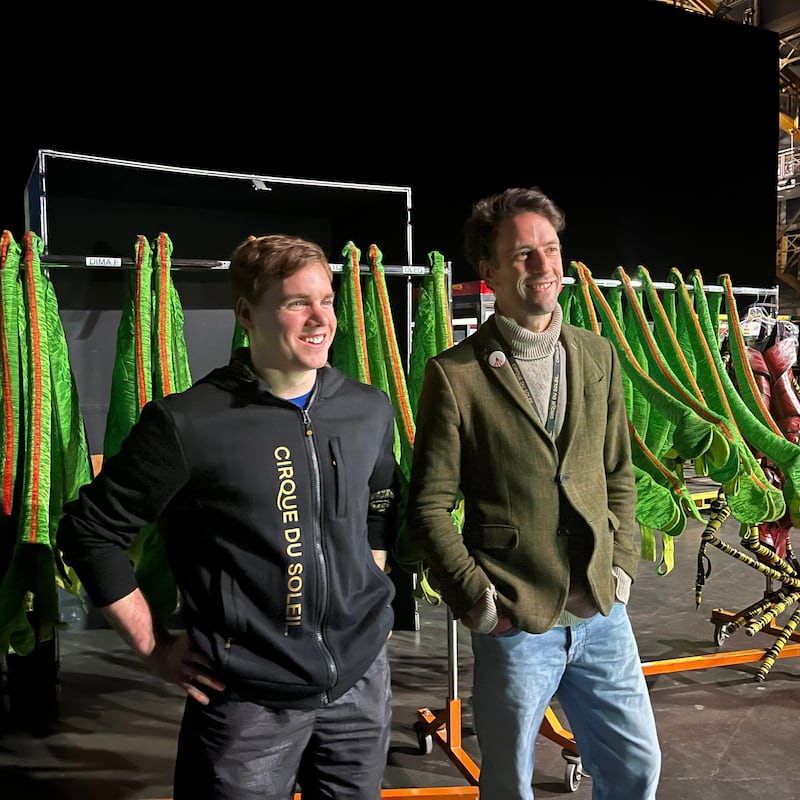
De Laender has always been an athlete, a tumbler competing at a high level. He wanted to continue acrobatics, but outside of sport. “As a gymnast, going to the circus is the only job opportunity you have,” the 33-year-old acrobat says. He joined another Cirque du Soleil show, La Nouba, in Florida in 2015. That show was based in Orlando, but since 2017, when he switched to Ovo, he has toured every continent except Antarctica.
Beer, who is 39, has been with Cirque du Soleil for only a year and a half. “I’m quite fresh,” he says, grinning. He’s from a physical-theatre background; he and his wife, Katerina Damvoglou, ran their own stage company, Fly Theatre, in Athens. Counterintuitively, he ran away with the circus for stability. “I know that sounds kind of funny – it doesn’t look like a very stable situation. But as a freelance theatre director or actor, this is maybe the most stable you can be. And because it’s such a big company, with so many shows, you can potentially stay with them indefinitely. I’ve got a kid on the way, and it was time to settle down. We’re moving city every week, but it’s still kind of settling down.”
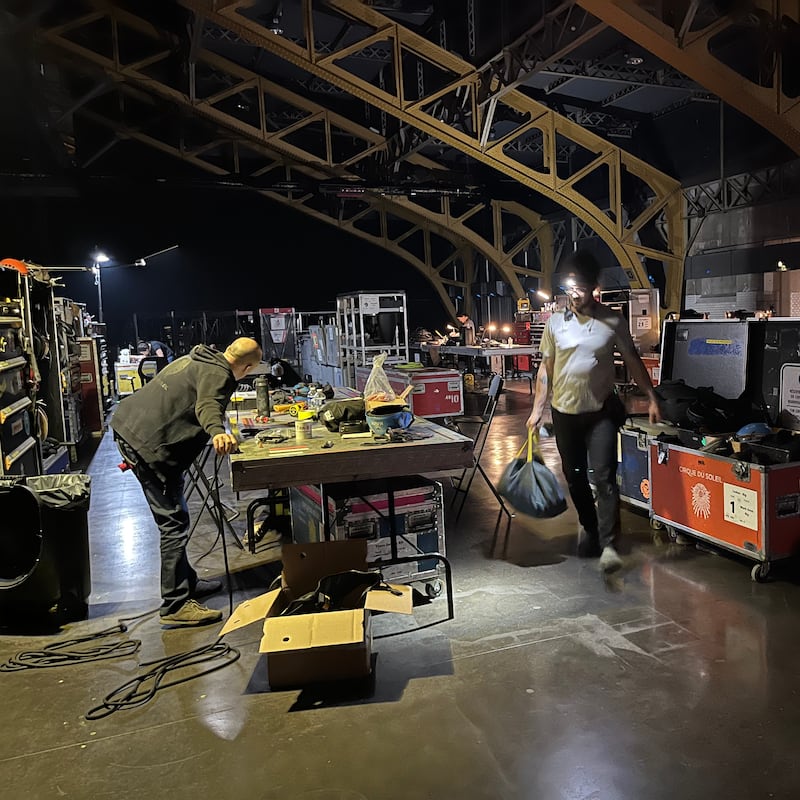
You get used to the lifestyle, says De Laender, but he’d like to “travel slower”, maybe in big-top shows, which spend two months in each city. Plus, in big tops, “the audience is closer”. Beer agrees: “It’s magical. Every format has pros and cons. For some of the younger people, who want to travel as much as possible, arena is a big thing. It’s just a great way to do that.”
How does circus compare to sport? “It’s not easier,” says De Laender, “because you have to pace yourself differently. In sports you peak in your competition period. You have a rest period, you build it up, and you peak.” Working in circus, “you have to be 75-80 per cent at all times. There’s no peak moment, but there’s no rest moment either. Especially if you are going towards the end of the leg, like now, we’re really feeling it. Usually the last week gets the hardest, because you feel the tour break coming. Your body’s, like, oh, it’s time to relax – but no, no, no: not yet, not yet, hold on!”
Performing relentlessly for enormous audiences still generates an adrenaline rush, “especially if the audience is very enthusiastic”, De Laender says. Beer adds, “You can’t get comfortable in a show like this. You can’t walk out in front of 4,000 or 5,000 people and be comfortable about that, however professional you are. For sure, it’s a challenge every day... Even one change can really throw you off, because you’re doing so many shows every week. I never get into automatic mode, but you realise it’s so much in your body that as soon as you change one tiny thing, everything…” De Laender finishes Beer’s sentence with a dramatic inhale: “...a panic moment! It happens. Once in a while you’re off a beat or make a little mistake, and it just throws you off so much. You’re, like, oh, I need to get back to the rest of the choreography.”
It’s more fluid for the comic characters, says Beer. “The comedy, it just changes. The reaction from audiences changes culturally, every week sometimes. Say for a month you’ve been getting a really big laugh for one gag. Then you turn up in, I don’t know, Switzerland, and they don’t laugh. We’re playing a sort of duet with the audience all the time ... Maybe it’s a small audience or maybe that joke just doesn’t work in that culture.
“We spent so long in the Middle East and we weren’t getting big laughs. It’s a sort of new thing there, circus. They don’t know, necessarily, how to react. I realised, when we got to Europe, we were just speeding through the clown numbers, because we weren’t expecting laughs at all. We had to make a concerted effort to slow down, because they were laughing again.
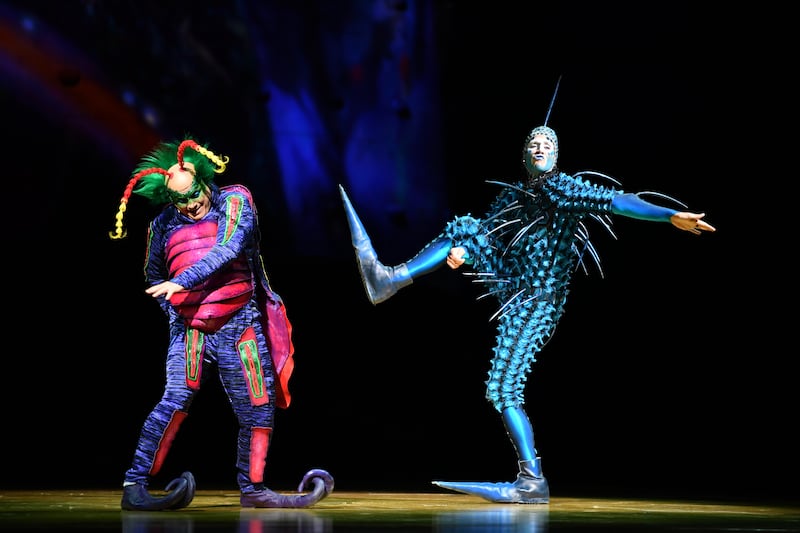
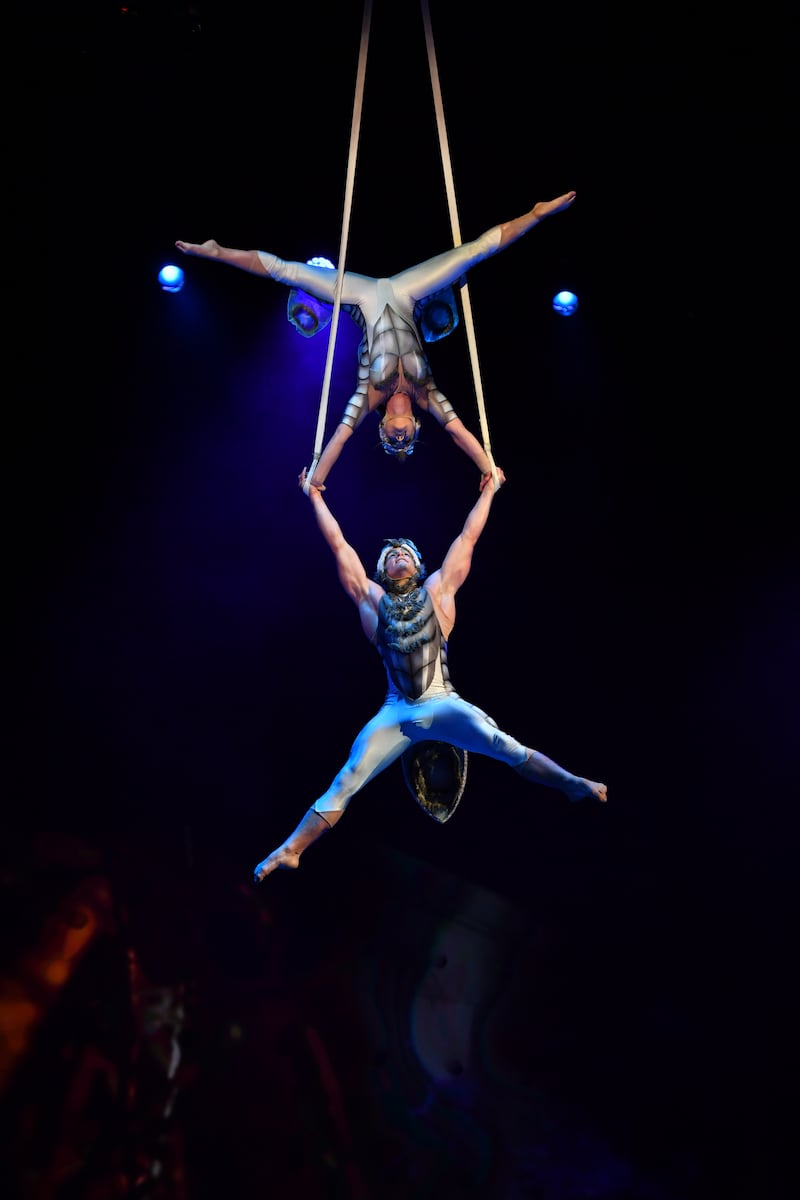
“Every city can be different. We just spent three weeks in Italy. I do this kind of fake politeness.” He goes into an exaggerated apologetic mode. “They found that really funny last week.” Audience response can also vary depending on the arena layout and on how far away the audience is. Plus, Beer jokes, “if they’re cold they don’t laugh so much. If they’re hot they fall asleep!”
Beer’s fly make-up and costume take 90 minutes to put on – or, “if I want to be relaxed about it, two hours”. De Laender says crickets have “the easiest make-up in all of Cirque”: the six steps, including full face cover, take him 25 minutes, although he can do it in 15 when he’s under pressure.
“My costume is ridiculous,” says Beer. “It’s hilarious. I get a laugh just by being on stage. I’m a bluebottle. I have these hairs that look like spikes, and they bounce around. I stop and they carry on bouncing.” His shoes are very long. “I just extend a lot, so I have to make sure I have a bubble around me, because I’m just going to poke people in the eye. They tread on my shoes all the time.”
De Laender points to the extra cricket legs that he wears. “We connect them to our hips and ankles. They have pivots in the back. I can move freely with them. When I move left and right, whoosh, they swing around.”
As we walk towards the auditorium we glimpse a pair of musicians in a nook behind the set; they are two of the seven-strong band that performs through the show. The audience can’t see them, but the musicians can see the stage and, via a screen, the audience, as well as having in-ear communication with the director, so they can adapt to what’s happening.
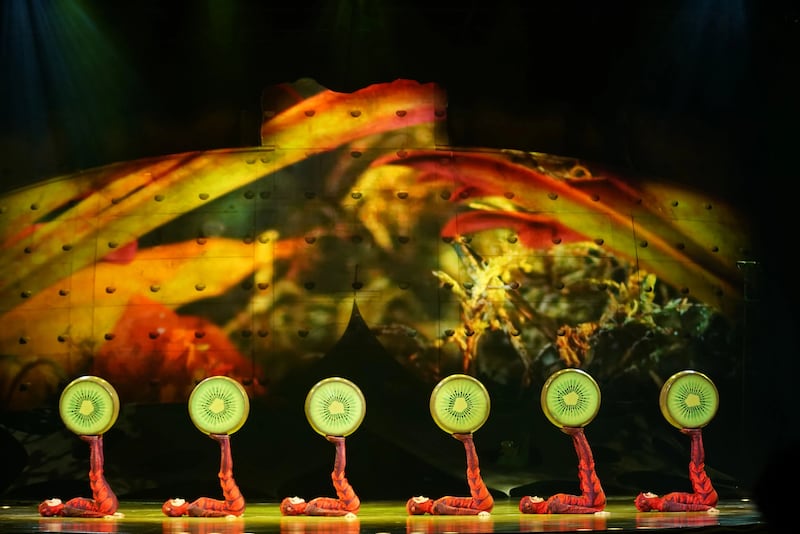
On the stage a bunch of trampolinists in shorts and T-shirts – they’ll be grasshoppers later on – are running a particularly tricky routine from the end of the show, involving racing up the set’s vertical wall, leaping down on to hidden trampolines, then springing back up the wall and falling again, over and over. It’s an exhilarating sight. They do this several times, watched by Lydia Harper, the director who’s responsible for Ovo on the road. In front of them an army of crickets run through their tumbles. Then the performers join several of these routines together to form a breathtaking sequence that is several minutes long. Later, in performance, it is the most spectacular part of the show.
Afterwards, De Laender talks about the multiple flips we’ve just watched. “Usually I’ll do about 15. Sometimes a bit more. If the audience reacts well, I’ll try to keep going a bit longer.” The track is 25 metres long, with a 10-metre run-up and a landing area. Safety is key, “always, at all times. Especially for trampolinists. They jump from so high on to the trampoline, they have to be focused. If they make a mistake they can fly off.”
The safety measures are rigorous, says Beer, although if someone injures themselves, or sprains a muscle, during an act “you probably wouldn’t even notice”. De Laender adds, “If you can cover for it we’ll make sure the show continues.” If something more severe were to happen, Beer says “there’s a whole protocol. The basic rule is: stop. We have two physios with us all the time. Anything at height happening on stage, they’re there, with neck braces ready, just in case.” They also regularly train for accidents, right up to stretchering performers off the stage.
“You know that thing when people say, ‘Ah, the government’s like a circus’?” Beer says. “And they mean it’s crazy, there are no rules. It’s actually the opposite, completely. Circus is the most anal place. You can’t move anything. If anything changes on stage, if they drill another hole, we have to have a whole staging, validating it, making sure no one’s going to fall into it.”
Ovo is at 3Arena, Dublin, from Thursday, April 18th, to Sunday, April 21st





















